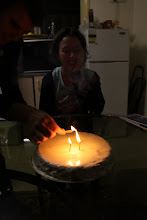The key agenda of David Campbell’s article “Horrific Blindness: Images of Death in Contemporary Media” is to unravel some of the hidden narratives behind why certain images of horror and violence go unpublished in mainstream media. Yet, its secondary agenda seems to be to actually tell some of these stories that hitherto have gone untold in their fullness, for example, the Bahr el Ghazal famine (68 – 69). The stories that Campbell tells are in part to illustrate his points, and on the other hand for the sake of their being told. Given this, it strikes as somewhat odd that these stories themselves go unillustrated. Perhaps Campbell sees that the fact that these stories have been told at all as some sort of inroads to the problems he outlines, in which case, the power of no images comes to the fore.
One horrifying story in the news in 2007 and 2008 was the disappearance of Madeleine McCann in Portugal. This disappearance, like many disappearances, was characterised by a continuing lack of images, as Madeleine went unfound, with only her portrait and the blank façade of the holiday park repeating in the media day after day. Hope for her safe return was constantly problematised by this lack of images. This lack created a scenario wherein the worst (whatever that may have been for each viewer) remained and remains constantly possible.
The Telegraph online archive page
Works Cited
Campbell, David. “Horrific Blindness: Images of Death in Contemporary Media”. Journal for Contemporary Cultural Research. Vol. 8, No. 1, Routledge, 2004: 55 -74
Madeleine McCann – Latest News of the Search – Telegraph 12 October 2008. Telegraph.co.uk accessed 12 October 2008

1 comment:
Hi Anna, you don't know me but I have a blog and reproduced your post and analysis of David Campbell's Horrific Blindness: Images of Death in Contemporary Media. I posted a link to your blog. Please tell me if that is okay or not.
Thank you
warm regards
Joana Morais
Post a Comment